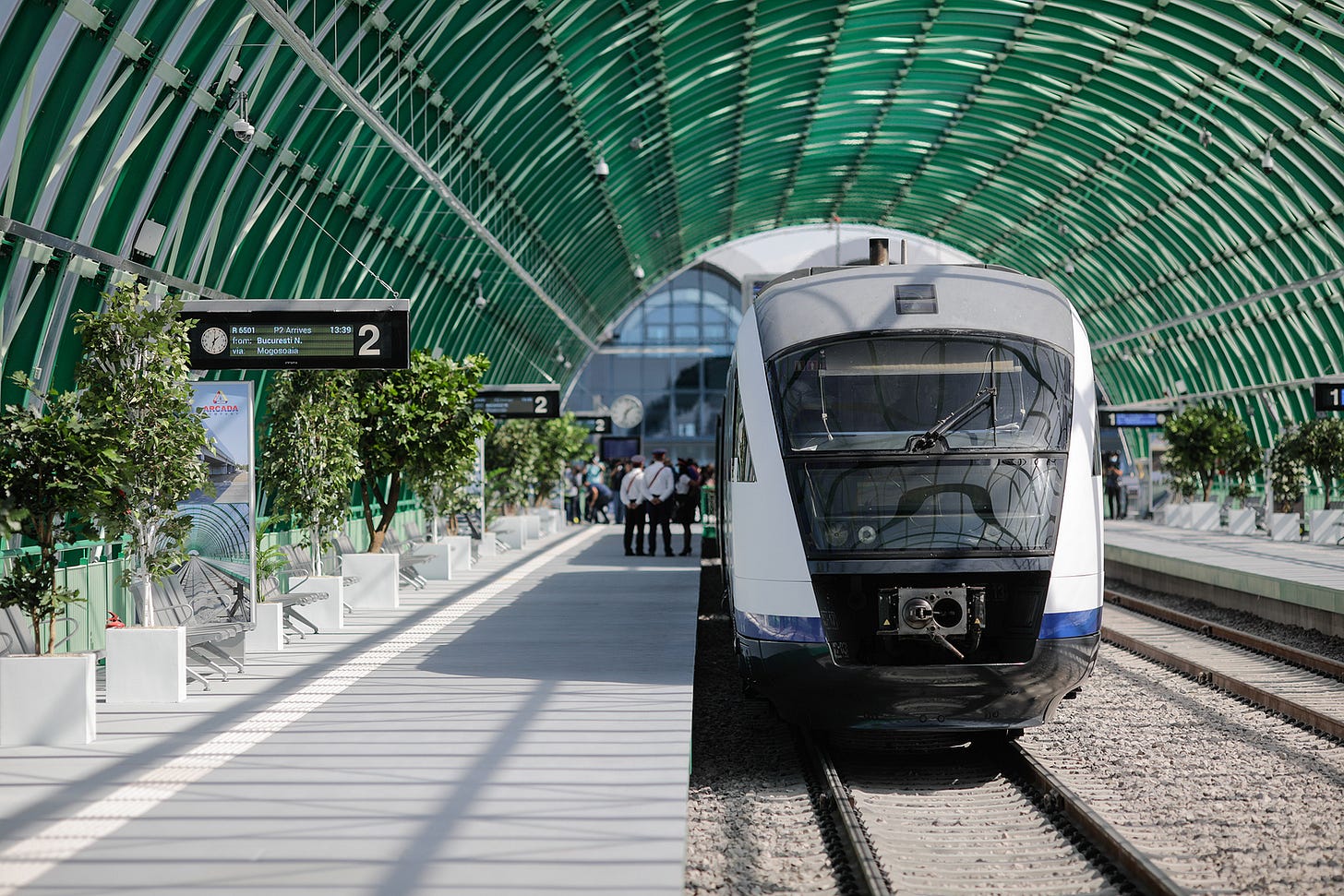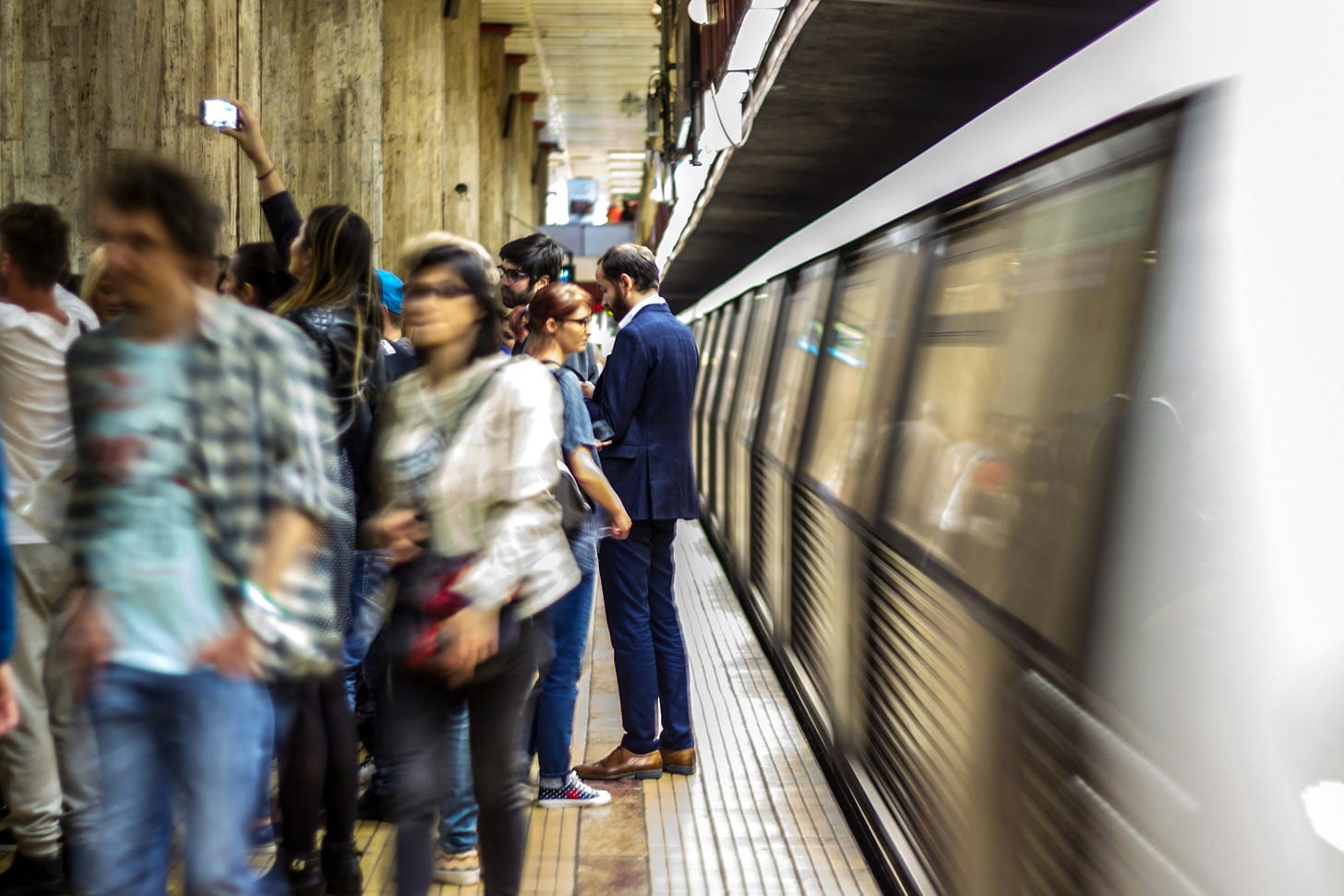
It costs just five lei (around one euro; paid with any contactless card onboard), runs every 40 minutes around the clock, and takes just 22 minutes or so to reach Bucharest’s main railway station—Gara de Nord.
It’s not perfect (some further investment is needed to install double track on much of the route to allow for more frequent services; while getting from Gara de Nord to the city centre requires an onwards bus or metro trip), but the current rail link to Bucharest’s Otopeni Henri Coandă Airport is a decent, well-used service.
I use it all the time and will often not get a seat due to the high number of fellow passengers.
Furthermore, as it utilises almost exclusively existing infrastructure, it was built (for Euro 2020/2021) on the (relative) cheap. Only the final few hundred metres, which cross the main road between Bucharest and the north of Romania, the DN1, had to be constructed from scratch. The Henri Coandă Express, as it is known, is a good example of how urban infrastructure can be built quickly and cheaply with no need to reinvent the wheel.
—
The idea of using an existing track that passes within a few hundred metres to link Bucharest with its airport is not new.
Various transport think tanks and pressure groups had been advocating for it for decades. It was Bucharest being chosen as a host city for the European Football Championships in 2020 (held in 2021 due to Covid-19) that finally gave Romania’s government the impetus to actually build it—doing so was a condition of Bucharest serving as a host city.
—
Those same transport think tanks and pressure groups who advocated for the link had long suggested that it was a low-cost, efficient alternative to the construction of a long-mooted metro line.
Nevertheless, that metro line is now finally under construction. With more frequent services and serving many stops along the way, it will provide a direct link to the centre of Bucharest and make the train link redundant.
Hang on… Let’s write that last sentence again, because it should read:
The metro will provide a slower link to Gara de Nord, meaning that the train will still be the preferred form of public transport for most people looking to get from the airport to the city centre.
Absurd planning decisions abound throughout Romania, but the Bucharest airport metro link is one of the most bizarre in its—or any country’s—history.
With construction costing billions, the very least the metro link should do is deliver thousands of passengers a day to the city centre. Instead, reaching the city centre (defined as Universitate or Piața Romana) will require no fewer than two changes of metro line.
—
The metro line from Bucharest airport (M6; scheduled for completion in 2028) will terminate, like the train, at Gara de Nord, where a change is made onto the M1 or M3 lines, to Piața Victoriei. There, a second change is needed, to the M2 line, which serves the city centre.
It is, in a word, madness. Given that the rail link already serves Gara de Nord, the metro should be a direct link with the city centre, or at the very least linking up with the M2 at Piata Victoriei:

There are three main arguments that supporters of the current route put forward, the first of which is that the M2 is already over capacity and simply can’t handle additional airport traffic. It is a valid point but signalling upgrades could allow for more trains per hour, as would operating it as a shuttle to and from Victoriei.
The second argument is that the station at Pajura will provide an underserved district of Bucharest with rapid transit. This is sound, but there are several other underserved areas which arguably warrant rapid transport links more urgently (Colentina, Lacul Tei for example).
The third argument is that the chosen route is much cheaper. Can’t argue with that.

In keeping with the idea that Bucharest has other priorities beyond a white elephant of a metro line (which is what I predict it will be—unless the existing train link is suspended pour encourager travellers onto the metro) my thoughts turn to the airport itself.
In that peculiar but fitting English phrase, Otopeni is ‘not fit for purpose’. It many years ago became far too small for the number of passengers using it, and at busy times (particularly the early morning) it is hell on earth.
Queues for security snake out of the terminal building, there is nowhere to sit, and the cost of everything is not merely extravagant but outrageous.
Airports around the world are notoriously expensive, but Otopeni simply takes the piss.
Were it a super efficient place I wouldn’t mind so much. But for that to happen it needs billions of euros in investment—ideally an entirely new terminal. Or, about the same amount the M6 is costing. Some small changes to improve the rail link (double tracking those sections that need it, better signalling, faster rolling stock, trains at ten minute intervals) would solve the rapid transit issue.
Instead, we’re getting a metro that in large part replicates an existing service.



